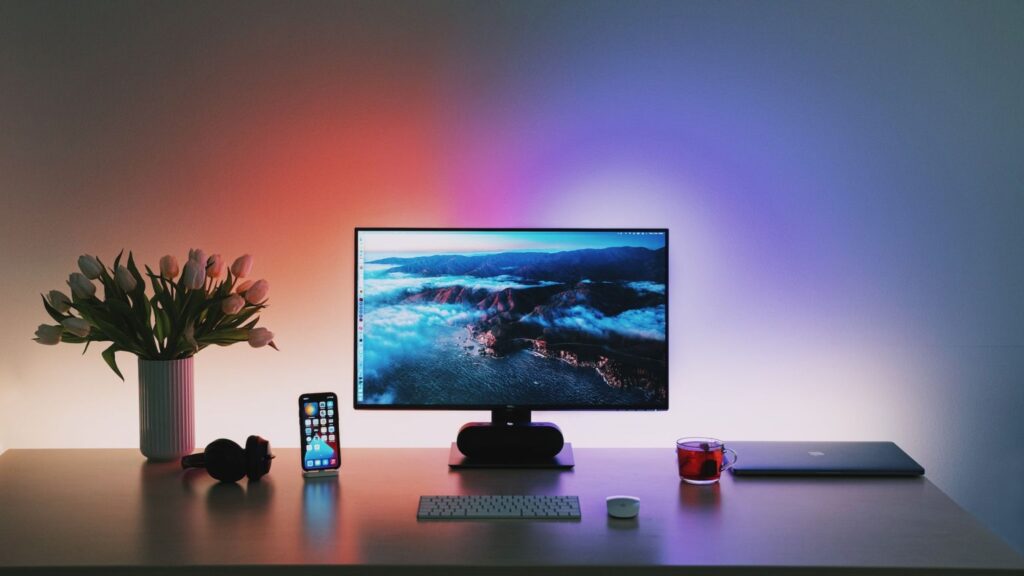Remove Anti Glare Coating Monitor: Step-By-Step Guide

Having a glossy monitor can be great, until the glare from lights start to become a nuisance. But don’t worry, it’s possible to remove anti glare coating from your monitor and get back that glossy finish with just a few simple steps. In this article, we’ll go over how to safely remove anti-glare coating from computer monitors, including what materials you need and specific techniques for achieving the best results.
Remove Anti Glare Coating Monitor: Step-By-Step Guide
Having a monitor with an anti-glare coating can be a great way to reduce eye fatigue and improve visibility while working on a computer. Unfortunately, it is not uncommon for the coating to wear off over time or get scratched, leaving the monitor looking dull and cloudy. If you are looking for ways to remove the anti-glare coating from your monitor without damaging it, we will provide you with tips on how to do so safely and effectively.
What Is Anti Glare Coating?
Anti-glare coating is a special coating or film that is applied to the surface of a computer monitor or other electronic device to reduce the amount of glare and reflections on the screen. This can make the screen appear less bright and less harsh, which can be more comfortable for the eyes to look at for long periods of time. Additionally, anti-glare coatings can also help to reduce the amount of blue light emitted by the screen, which can cause further eye strain and even affect sleep patterns.
Step 1: Supplies Needed
To remove the anti-glare coating from your monitor, you will need a few basic supplies. These include:
- A microfiber cloth: Microfiber cloths are gentle on surfaces and are effective at removing dust and debris from the monitor. They are also lint-free, so they won’t leave behind any fibers that could damage the screen.
- A plastic scraper or credit card: A plastic scraper or credit card can be used to gently rub the surface of the monitor to remove the coating. It’s important to use a plastic scraper or credit card instead of a metal object, as metal can scratch the surface of the monitor.
- A solution to remove the coating: You can use a mixture of equal parts white vinegar and water to remove the coating, or you can use a specialized product made specifically for removing coatings. It’s important to use a solution that is gentle on the surface of the monitor, as harsh chemicals can damage the screen.
- A clean, dry cloth for wiping down the monitor: After the coating has been removed, you will need a clean, dry cloth to wipe down the monitor to remove any remaining solution or residue.
Step 2: Prepping the Monitor
Before you begin the process of removing the anti-glare coating, you will need to prepare your monitor. Start by turning off the monitor and unplugging it from the power source. This is important for safety reasons, and also to avoid any accidental damage to the monitor. Then, use the microfiber cloth to gently wipe down the surface of the monitor to remove any dust or debris. This will ensure that the surface of the monitor is clean before you begin the removal process.
Step 3: Applying the Solution
Once your monitor is clean and dry, you can begin applying the solution to remove the coating. If you are using a mixture of white vinegar and water, pour the solution into a spray bottle and mist it onto the surface of the monitor. This will allow you to evenly apply the solution without over saturating any one area. If you are using a specialized product, follow the instructions on the packaging for application. Be sure to wear gloves and work in a well-ventilated area when using chemicals or specialized products.
Step 4: Rubbing the Surface
Once the solution has been applied, you will need to use the plastic scraper or credit card to gently rub the surface of the monitor. Be sure to work in small sections at a time, this will allow you to focus on one area and ensure that you do not miss any spots. Also, use light pressure to avoid scratching the screen. Be gentle and persistent when removing the coating.
Step 5: Finishing the Job
After you have rubbed the entire surface of the monitor, use the microfiber cloth to gently wipe down the screen to remove any remaining solution and coating. Then, use the clean, dry cloth to wipe the screen down again to remove any remaining residue. This is important to ensure that the surface of the monitor is clean and free of any debris or leftover solution.
Step 6: Effective Removal Tips
Be sure to work in small sections at a time and use light pressure to avoid scratching the screen. If you are having difficulty removing the coating in certain areas, you can apply more solution and let it sit for a few minutes before rubbing again. Use a clean, dry cloth to wipe down the screen after the coating has been removed to prevent any damage from leftover solution or residue.
Also please note that removing anti-glare coating from a monitor is delicate process, and it’s always recommended to consult the manufacturer or professional help before attempting to remove the coating.
Conclusion
It is important to remember that removing anti-glare coating from a monitor should only be done when absolutely necessary. It is an intricate process and can easily damage the monitor if it is not done correctly. By utilizing the steps outlined in this article, anyone can successfully remove an anti-glare coating from their monitor and restore it to its original clarity. With careful preparation, patience, and diligence any user can accomplish this task safely and effectively.